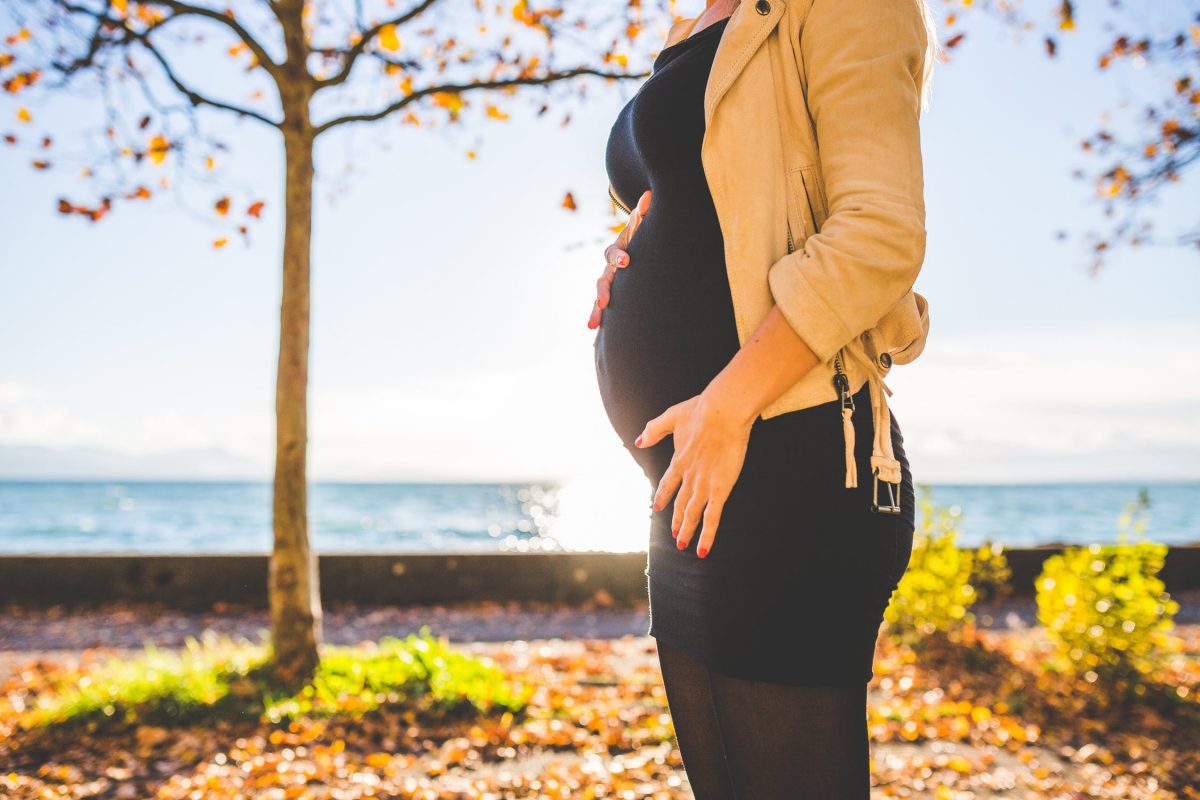- The Body Preparing for Childbirth
- Causes of Hip and Back Pain
- First, Second, Third Trimester
- Finding Pain Relief
- When to See a Physician about Pain
Experiencing hip joint pain during pregnancy is common. It is especially common during the second and third trimesters as the baby increases in weight, and the body prepares itself for labor. There are some steps a woman can take to minimize the pain, including doing some gentle exercises and adjusting posture.
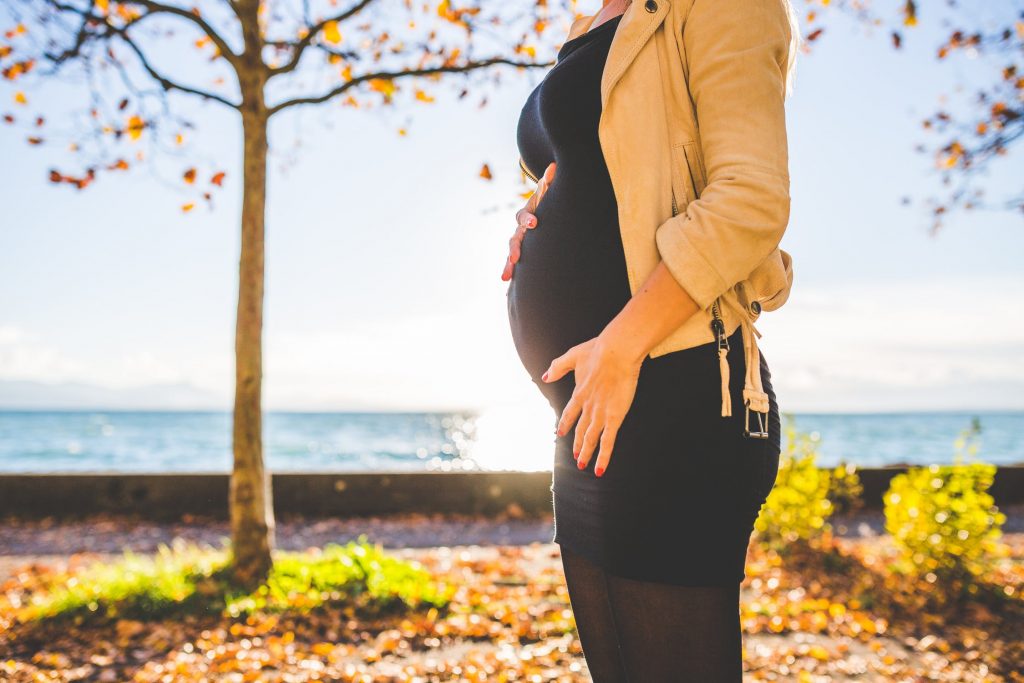
The Body Preparing for Childbirth
Having a baby is a wonderful and natural experience, but it is a physically stressful one too. Common stress is the hip and leg pain pregnancy induces because of physical changes a woman’s body goes through to enable a successful pregnancy, labor, and delivery.
Once pregnant, the series of changes in the body taking place during the pregnancy include:
- Release or increase in hormone levels during the first trimester, i.e., estrogen, progesterone, etc.
- Release of the hormone relaxin during the second or third trimester, impacting connective tissues
- Connecting tissues soften and relax
- Joints in the pelvic area loosen due to softened ligaments and tendons
- Flexibility in pelvic bones increases to enable the baby’s movement from the womb through the birth canal during labor
The larger the baby grows, the more stress placed on the body as the baby becomes heavier and more active. The hormones released relax connective tissues throughout the body, but it is the changes in the pelvic area in particular that lead to back and hip pain.
Causes of Hip and Back Pain
Pregnant women experience pain in different ways. It could be a constant ache, sharp bolts of pain or both. There are multiple causes of joint pain and general soreness during pregnancy:
- An increasing weight of the baby in the uterus leads to changes in posture that stress back, hip and leg joints
- Heavier uterus places additional pressure on the lower back
- Increased pressure on the sciatic nerve leads to hip and leg pain or numbness or tingling in the area from the hips to thighs (sciatica)
- Round ligaments connect the front of the uterus to the groin, and stretch and relax muscles; movements causing sudden stretching and contracting leads to brief shots of pain in the abdomen and hip area
- Poor posture or changes in posture while walking, standing or sleeping
Pain can be all along the spectrum of mild to severe. Sometimes pain will radiate into the buttocks and thighs and even down the leg, depending on the nerves impacted.
First, Second, Third Trimester
No two pregnancies are identical, but most hip pain usually starts during the second trimester and gets worse in the third trimester. The growing baby places increasing stress on the body due to its weight and shifting movements, coupled with the hormone-induced changes in the body.
There can be hip pain pregnancy first trimester. It is more likely a woman will experience back pain first during the first trimester if she experiences any pain. In fact, back pain may be an early symptom of pregnancy.
The pain may change in severity, type, and constancy as the baby continues to put on weight. For example, during the second trimester, it may become painful to walk or certain positions trigger pain.
For some women, the hormone relaxin begins to increase and soften ligaments and tendons. However, the hip pain during pregnancy second trimester could be due to any of the causes of joint pain listed. According to the American Pregnancy Association, round ligament pain occurs most often during the second trimester.
Hip pain during the pregnancy in the third trimester is usually when the pain is at its worst. The baby has put on significant weight, and the pregnancy hormones are produced in their largest amount. Towards the end of the third trimester, the baby drops lower to prepare for birth. This puts more pressure on the hips, pelvis and lower back.
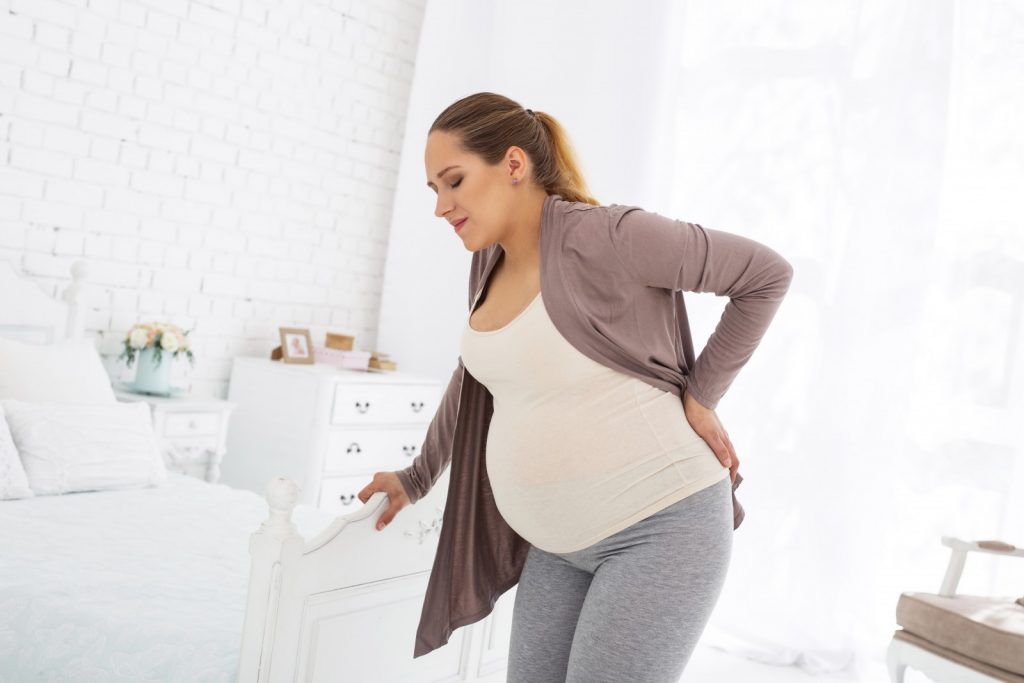
Finding Pain Relief
Hip and leg pain pregnancy related can make it difficult to do even simple activities, like sitting and walking and especially sleeping. The center of gravity in the body changes, so some behavioral changes are in order.
Pregnancy hip pain relief and pain relief in other joints is often possible by taking several steps. Following are some suggestions.
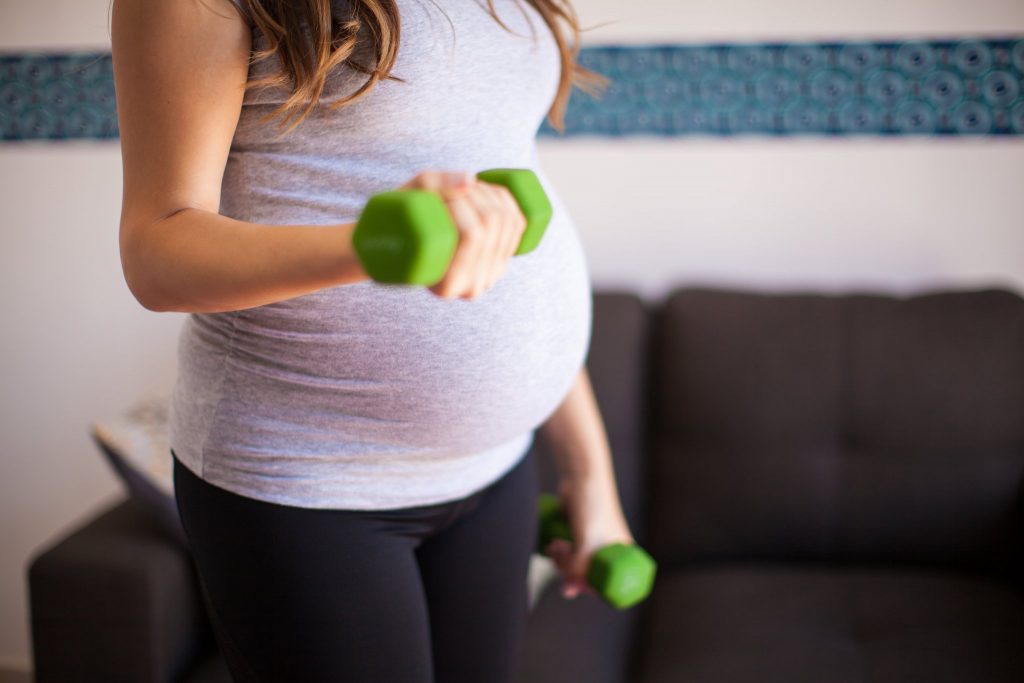
1. Applying a Warm Compress
Applying a warm compress increases the blood flow to the hips and reduces muscle spasms. The spasms are usually due to the additional weight placed on the hip joint muscles and relaxin release.
The relaxin release is a normal release of a reproductive hormone that is produced by the placenta and ovaries. The purpose of relaxin is to relax joints, muscles and ligaments to assist the body with stretching to accommodate the growing baby.
2. Using a Pelvic Belt for Pregnant Women
A pelvic belt (aka belly band or pregnancy belly support) is a flexible belt that is designed specifically for pregnant women. It can provide uterus support and assist with pelvic alignment.
As the baby grows, the uterus expands beyond the pelvis, and that can lead to round ligament pain. The pelvic belt is worn low on the abdomen to help position the baby off the pelvis and restore the body’s center of gravity. This can bring relief for pelvic pain and lower back pain.
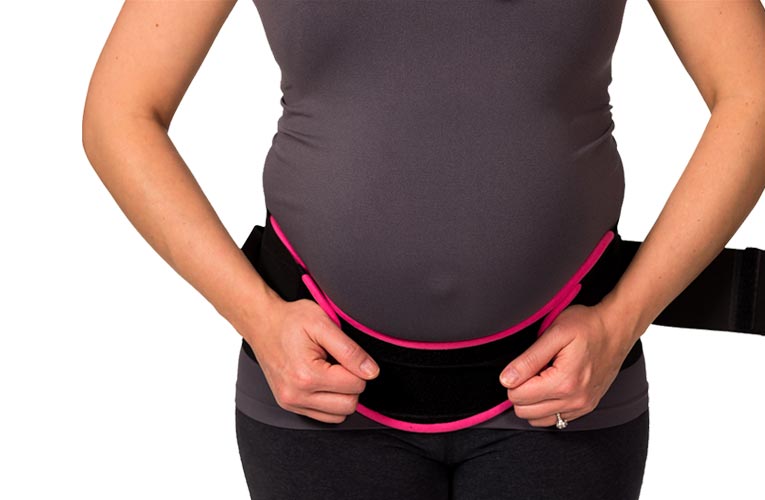
3. Finding a Comfortable Sleeping Position
Finding the most comfortable sleeping position during pregnancy is often a problem as the baby grows.
Hip pain while pregnant may be minimized by:
- Sleeping on your favorite side
- Bending the knees while sleeping on your side
- Placing a pregnancy pillow between your knees that is designed to relieve hip stress and pain
- Adding additional pillows as needed under the abdomen and/or behind the back
- If experiencing heartburn, prop the upper body up by laying on pillows
Side sleeping is recommended because sleeping on your back places the weight of the uterus on the back and spine. Sleeping on your side allows for better circulation and lessens the pressure on organs and veins. There are different types of pregnancy pillows to assist with sleeping comfortably on your favorite side. There are pillows that provide back and uterus support and full-body pregnancy pillows, both designed for side sleeping.
4. Standing and Walking
Maintain good posture while standing and walking as the baby grows to avoid straining the lower back muscles. Keep the back straight, and do not lean back. Keep the shoulders back. Use a wide stance for standing.
5. Sitting
Sit and stand with care, using the legs and choosing firm chairs with good support. Place a pillow behind the lower back for comfort and to encourage keeping the back straight.
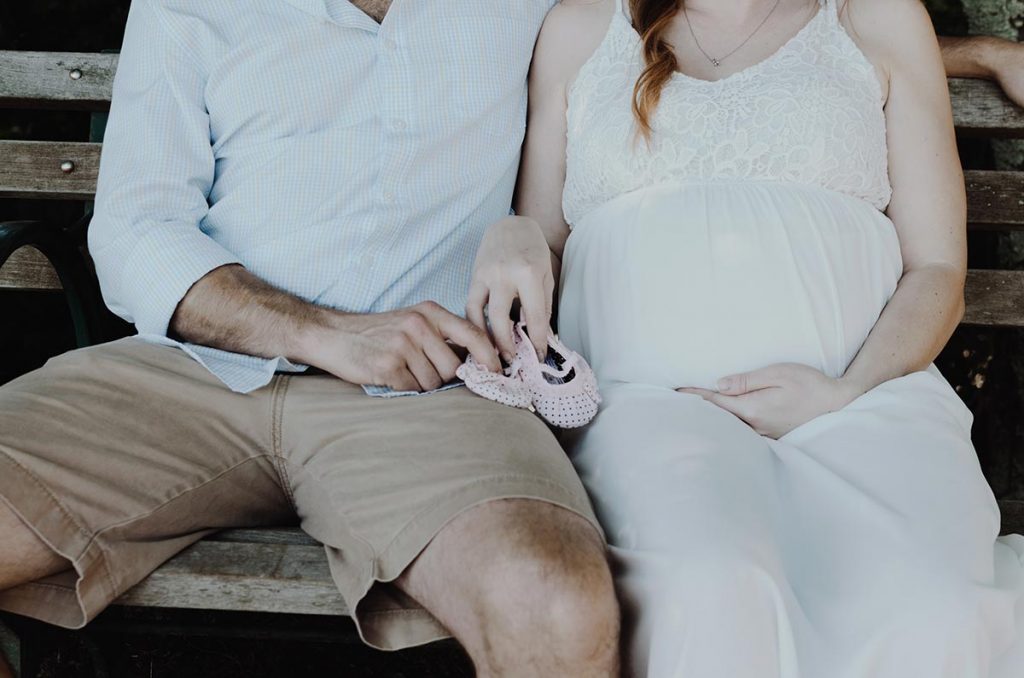
6. Lifting
Do not lift anything large or heavy. Only lift with the legs while keeping the back straight.
Do regular gentle exercises, like stationary cycling, swimming, walking and low-impact aerobics (one foot stays on the ground).
7. Stretching
Do regular gentle stretches for the back, hips, and legs. Prenatal yoga includes the cat-cow, child’s pose, back leg stretch, and many others.
8. Soaking
A nice long soak in a warm bath can reduce pain.
Finding a comfortable sleeping position while pregnant is often a problem as the baby grows. The hips pain while pregnant may be minimized while sleeping by:
- Sleeping on your side
- Bending the knees
- Placing a pregnancy pillow for pain between your knees
- Adding additional pillows as needed under the abdomen and/or behind the back
Schedule a Medical Consultation
Hip pain during pregnancy is one of the most common issues that women experience. It is important to take steps to ease the pain to avoid other medical issues that could develop due to accommodating the pain. For example, without treatment and some lifestyle changes, pregnant women may not walk correctly due to the pain which places further stress on the hips. The additional weight of the baby also places extra stress on the knee joints. All joints – hips and knees included – are impacted by changes in hormone levels too.
A medical consultation can help the doctor identify the specific cause of the pain and develop the best treatment plan. The pain may be due to relaxin release or pressure placed on the sciatica nerve, for example. A doctor’s treatment plan may include recommendations like the following.
- Based on the results of a medical consultation, develop a specific treatment plan that best targets the source of the pain
- Take an over-the-counter NSAID or acetaminophen like Tylenol
- Attend physical therapy session that focus on core and pelvic exercises
- Participate in moderate aerobic activity (if healthy) as recommended by the American College of Obstetricians and Gynecologists
- Design and follow a healthy diet that reduces the chances of adding extra weight
When to See a Physician about Pain
If pain develops in the first trimester, it is important to see a physician to pinpoint the cause of the pain. It may not be due to the pregnancy when it occurs so early. If pain is accompanied by other symptoms, such as feeling dizzy or vaginal spotting, there could be other medical issues.
Also, consult a physician at any point during the pregnancy if the pain in the hips or back becomes unbearable and endures for more than two weeks. The physician may suggest taking a mild medication or recommend some type of treatment.
